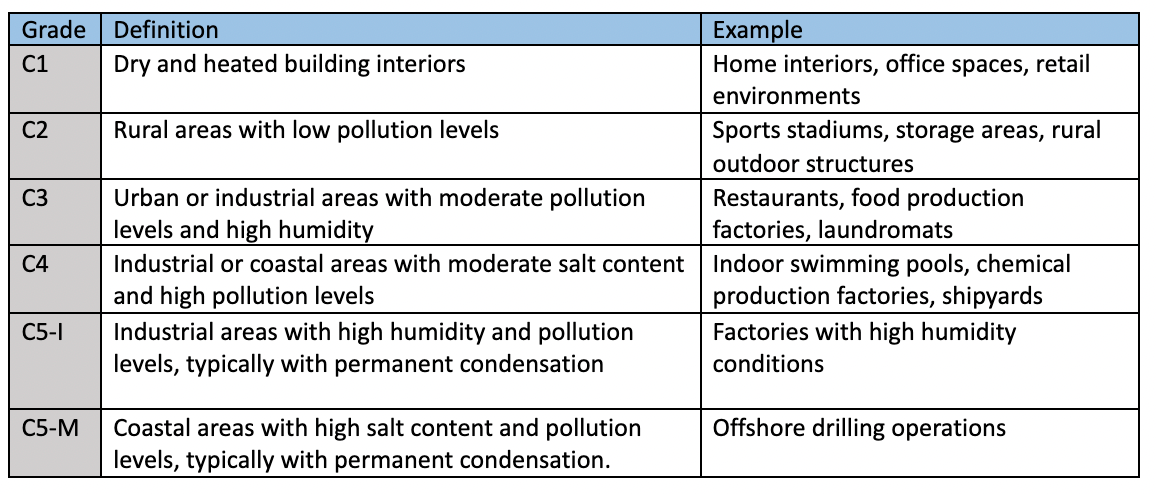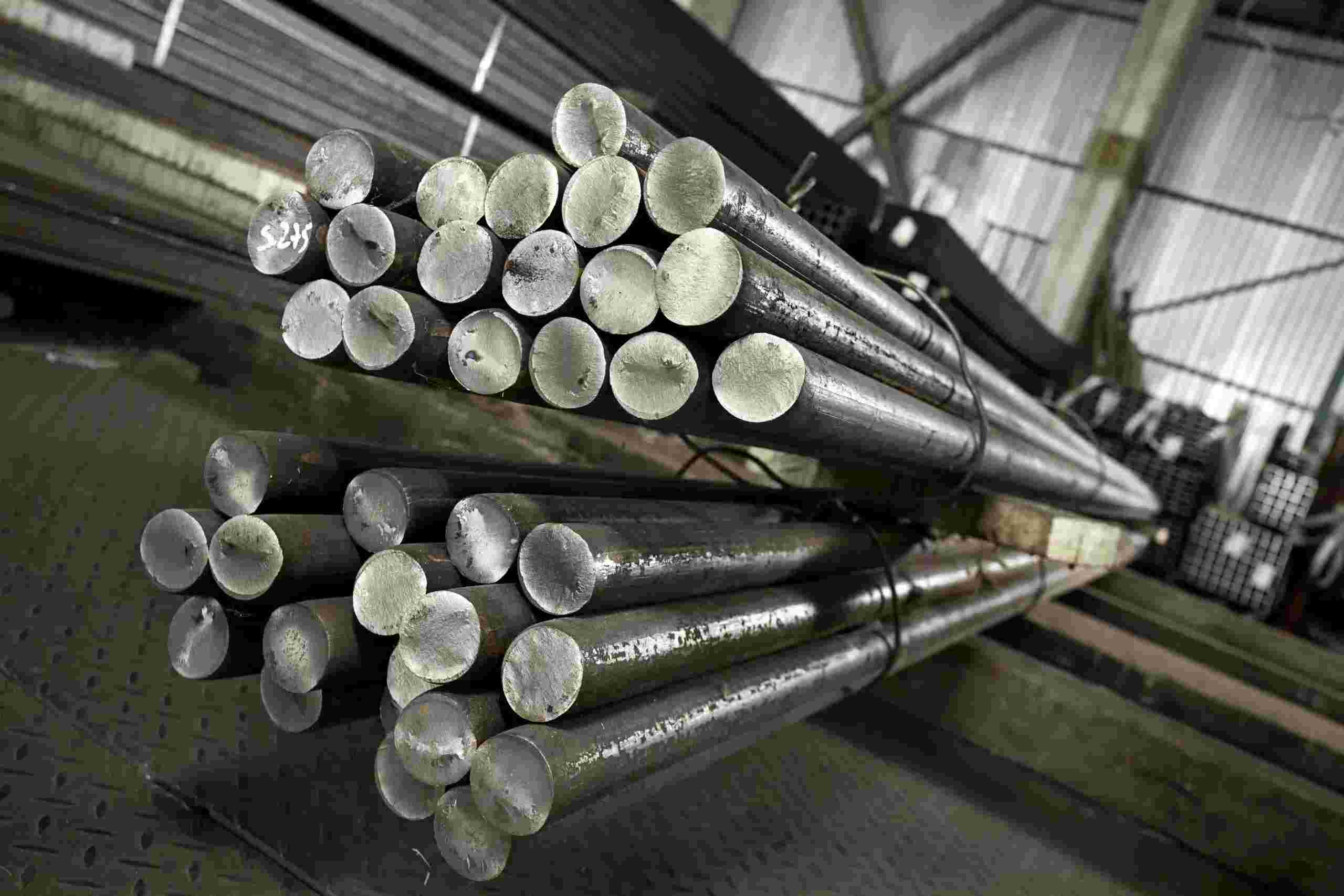304 and 316 stainless steels are the two most commonly used stainless steel grades. Both grades contain ample amounts of chromium and nickel; because of this, they thrive against heat, abrasion, and corrosion.
However, it can be difficult to distinguish between 304 and 316 stainless steels, as differences between the two cannot be determined by visual inspection. To verify each alloy, a material test report (MTR) will be required, or XRF spectrometers will need to be used to authenticate each metal. Although they have many similarities, some unique properties of each can affect the quality and longevity of their intended uses. It’s important to know which metal would work best for your specific application.
In this article, we compare and contrast 304 vs. 316 stainless steels and detail the ideal applications of each.
304 vs. 316 Stainless Steel: Basic Property Similarities and Differences
Below, we detail the similarities and differences between the essential physical, chemical, mechanical, and machining properties of 304 vs. 316 stainless steels.
Physical Properties
| 304 Stainless Steel | 316 Stainless Steel | |
| Melting Point | 1450℃ | 1400℃ |
| Density | 8.00 g/cm^3 | 8.00 g/cm^3 |
| Thermal Expansion | 17.2 x10-6/K | 15.9 x 10^-6 |
| Modulus of Elasticity | 193 GPa | 193 GPa |
| Thermal Conductivity | 16.2 W/m.K | 16.3 W/m.K |
Both 304 and 316 stainless steel alloys are equally dense, elastic, and responsive to thermal conductivity. However, 304 stainless steel has a higher melting point and better thermal conductivity than 316 stainless steel. Nevertheless, both alloys show excellent oxidation resistance in intermittent service up to 1,598°F and continuous service at 1,697°F.
Chemical Composition
304 stainless steel contains 18% chromium and 8% nickel, whereas 316 stainless steel contains 16% chromium, 10% nickel, and 2% molybdenum. The molybdenum in 316 stainless steel makes it more corrosion-resistant than 304 stainless steel, but also more expensive as well.
Mechanical Properties
| 304 Stainless Steel | 316 Stainless Steel | |
| Tensile Strength | 500-700 MPa | 400-620 MPa |
| Elongation | 45% min | 45% min |
| Hardness (Brinell) | 215 max HB | 149 max HB |
| Proof of stress | 230 MPa | 210 MPa |
As shown in the table above, both alloys have high tensile strength; however, the molybdenum in 316 stainless steel gives it even higher strength and durability. However, 304 stainless steel is more malleable.
Machinability and Weldability
As per the standards set by the American Iron and Steel Institute (AISI), the machinability ratings of 304 and 316 stainless steels are 70 and 60, respectively, meaning the former is easier to machine than the latter. This is why 304 stainless steel has a wide variety of finishes and is ideal for applications requiring a smooth and shiny exterior (e.g., car fenders and serving trays).
Because both 304 and 316 stainless steels are prone to work hardening, special machining efforts are required. It’s essential to machine these alloys slowly under a high feed rate. Sharp tools must be used, and the moment they begin to wear out, they must immediately be replaced. Both types of stainless steel require advanced industrial saws and high-speed tools made up of cemented carbide or high-speed steel.
The weldability of 304 vs. 316 stainless steels depends on their carbon content. Both alloys have 0.08% carbon content. However, due to the overall difference in their alloying elements, 316 stainless steel is easier to weld with all standard welding methods. Post-welding, 316 stainless steel parts require annealing to avoid corrosion. However, with 316L stainless steel, post-annealing is not necessary.
|
Top-Grade Stainless Steel for Every Purpose and Industry |
||
|
New Stainless Steel Sheet |
New Stainless Steel Plate |
All Stainless Steel Shapes |
 |
 |
 |
|
Hygienic & durable: Engineered for cleanliness and long-lasting performance in food processing, healthcare, and industrial environments. Customizable for any project: Available in various specifications, including 304 stainless steel, and customizable to precise width and thickness needs. Versatile finish options: Polished to meet aesthetic demands, ideal for construction, decorative uses, or residential applications. |
Versatile applications: From intricate work requiring thin gauges to heavy-duty uses in construction, our stainless steel plates adapt to any project need. Superior durability: Delivers excellent corrosion and heat resistance, ideal for industrial, construction, and food processing applications. High-quality standards: Designed for top performance, with strength and corrosion resistance suited for demanding environments and everyday applications alike. |
High heat tolerance: Designed to perform under extreme temperatures, making it a top choice for heat-intensive sectors. Hygienic & easy to clean: Stainless steel’s non-porous surface makes it essential for hygienic applications. Customizable perfection: Tailored for your project with customizable thickness, width, and finish, ensuring a precise fit for every unique need. |
Understanding the Applications of 304 and 316 Stainless Steel
300 series stainless steels are known for offering excellent corrosion resistance. However, the application environment impacts the material selection.
To better understand the corrosion resistance of 304 vs. 316 stainless steels, we have provided two tables: the first table displays the different corrosivity categories that are provided by ISO 12944. Grades C1-C5 represent increasing levels of corrosivity (with C1 being very low and C5 being very high). The second table represents the ideal environments for these metals based on their corrosion grades.
| Grade C1 | Grade C2 | Grade C3 | Grade C4 | Grade C5 | |
| 316 SS | ✓ | ✓ | ✓ | ✓ | ✓ |
| 304 SS | ✓ | ✓ | ✓ | ✓ |

316 stainless steel is widely used in marine environments, thanks to the extra molybdenum content. Molybdenum offers immunity against chemical attacks, including chlorides, bromides, and fatty acids at elevated temperatures, making 316 stainless steel suitable for chemical processing equipment. Molybdenum also shields 316 stainless steel from metallic contamination—a major challenge for the food and pharmaceutical industries.
304 stainless steels are rich in chromium. In combination with nickel, chromium adds extra strength to the alloy, further improving corrosion resistance, especially against oxidizing acids. This makes 304 stainless steels easy to sanitize in kitchen and food applications. However, its lack of molybdenum makes it susceptible to corrosion under harsh environments, unlike 316 alloys. Should you risk exposing a 304 structure to a chloride environment, it will develop “pitting” beneath the protective chromium barrier and can compromise internal structures.
High-Quality Stainless Steel From a Reputable Metal Supplier
Industrial Metal Service can quickly and easily provide you with high-quality stainless steel for your project or manufacturing process. For those who are local to the San Francisco Bay Area, we offer same- or next-day delivery services in most cases. We also provide nationwide shipping to anywhere in the U.S. for those who don’t have the benefit of a local metal supplier.
Call us today to discuss your metal requirements. We look forward to working with you.
 Angle
Angle Cast Plate
Cast Plate Diamond Plate
Diamond Plate Flat Bar
Flat Bar Plate
Plate Round Bar
Round Bar Square Bar
Square Bar Square Tubing
Square Tubing Round Tubing
Round Tubing Angle
Angle Channel
Channel Diamond Plate
Diamond Plate I Beam
I Beam Round Bar
Round Bar Sheet
Sheet Square tubing
Square tubing Round Tubing
Round Tubing Rectangular Tubing
Rectangular Tubing Plate
Plate Rectangular Bar
Rectangular Bar Rectangular Tubing
Rectangular Tubing Round Bar
Round Bar Sheet
Sheet Square Bar
Square Bar Square Tubing
Square Tubing
